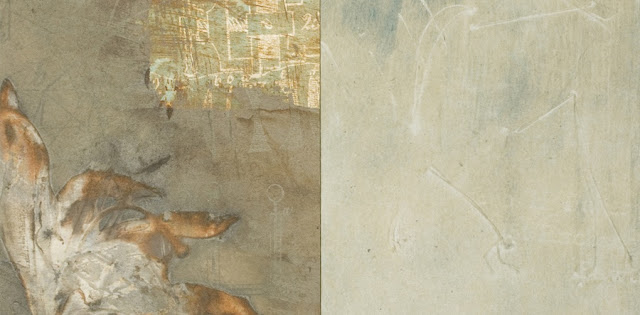 |
Maske, Photographs by Phyllis Galembo.
Published by Chris Boot, 2010.
|
Maske
Reviewed by Sarah Bradley
_______________________________________
Phyllis Galembo
Maske
Photographs by Phyllis Galembo
Chris Boot, 2010. Hardbound. 208 pp., 108 color illustrations, 8-1/2x9-1/2".
I found a promotional flyer for Phyllis Galembo's work a few years ago and tacked it prominently to my wall at home. It has received more comments than any one image in that collage, prompting a range of responses though mostly centered on profound curiosity. The flyer depicts several men in head-to-toe knit garments, brightly colored and intricately patterned. No one was quite sure what to make of it - the mysterious unusual nature of the image is captivating, but also familiar. These are intrinsically enthralling photographs, an impressive project rooted in Galembo's own long-term fascination with costumes and their transformative power. The over 100 photographs in
Maske capture the fantastic costumes of masquerade in Africa and the African Diaspora.
The artistry, creativity and ingenuity of the designs and materials shown in these wearable creations are intriguing and inspiring. The massive range of materials represented in these pages include leaves and grasses, wildly patterned fabric, leather, quills and shells, wood, cardboard and plastic, and on and on. Costumes range from ancient traditional fabrications to garments with a clear colonial influence, yet each is its own, each haunting. The forms are simultaneously human, yet other: some impressive constructions of vines and sticks; some more simplistic garments with hoods, a small carved head resting atop that of the wearer; some elaborate representations of animals, taxidermy heads stretching out from cloaks heavily adorned and ornamented. Children model self-made animal masks constructed from stitched cardboard, and some maskers come decorated in paint, brilliant green and scarlet contrasting vibrantly on their bodies.
 |
Maske, by Phyllis Galembo. Published by Chris Boot, 2010.
|
 |
Maske, by Phyllis Galembo. Published by Chris Boot, 2010.
|
With a book like this, it is easy to focus solely on the overwhelming quality of the subject itself rather than the photography. Galembo, however, has not just found a compelling topic for her work - she also takes fabulous photographs. The images are lit as well as most studio shots, but are taken on site. By deciding not to remove her subjects from their everyday surroundings and simply selecting an appropriate background, the costumes and their wearers stay in context while highlighting their spectacular nature. They are not exoticized - they appear as impressive creations of wearable art, but do not become fetishized objects. Yet Galembo does indulge in using those costumes to make stunning images. While seemingly captured with an ethnographer's care, the images are not merely a document of each garment. The subjects are often posed expressively, and not all shots are full length. Each makes a good portrait, not just a complete representation of the costume. The colors are bright and well saturated - each page a delightful morsel for the eye.
The opening essay by Chika Okeke-Agulu, who participated as a child in his town's masking festival in his native Nigeria, frames the book as an important ethnographic document, noting that it is astonishing that so many of these festivals still survive, particularly under the pressure of religion. The book is also a stunning affirmation of Galembo's tenacity and skill in undertaking and orchestrating a project such as this. With images taken in 7 countries, each section opens with a description from Galembo of the group of people she photographed, the significance of the costumes pictured, and the circumstances of her shoot, which, in and of itself, is an intriguing tale.
 |
Maske, by Phyllis Galembo. Published by Chris Boot, 2010.
|
But, at least for me, the book is more than this -- the interconnectedness goes beyond the African Diaspora and the colonial influences immediately visible in these costumes. I see a resemblance in the traditional costumes worn in the Balkan festival captured by photographer Estelle Hanania in her book
Parking Lot Hydra, constructions that are surprisingly similar to some of the costumes in
Maske, despite cultural and geographical distance. And those Balkan costumes immediately bring me to the work of contemporary American artist Nick Cave, whose sound suits are wearable sculpture that come alive with dance. This in turn reminds me of the fact that one of my visitors guessed that the Galembo flyer on my wall was performance art from New York, and indeed, I did stumble upon an image of just that, a person in a similar knit costume in the city. There seems to be a universal nature to masking, a resonate core and a lineage that is as much human as cultural. While
Maske is an important record for posterity, it is also proof that this tradition is living and breathing, and still creating and inspiring.
—Sarah Bradley
_____________________________
Sarah Bradley is a writer, sculpture, costumer and general maker of things currently living in Santa Fe, NM. She is a member of the Meow Wolf art collective and has worked for photo-eye since 2008.































